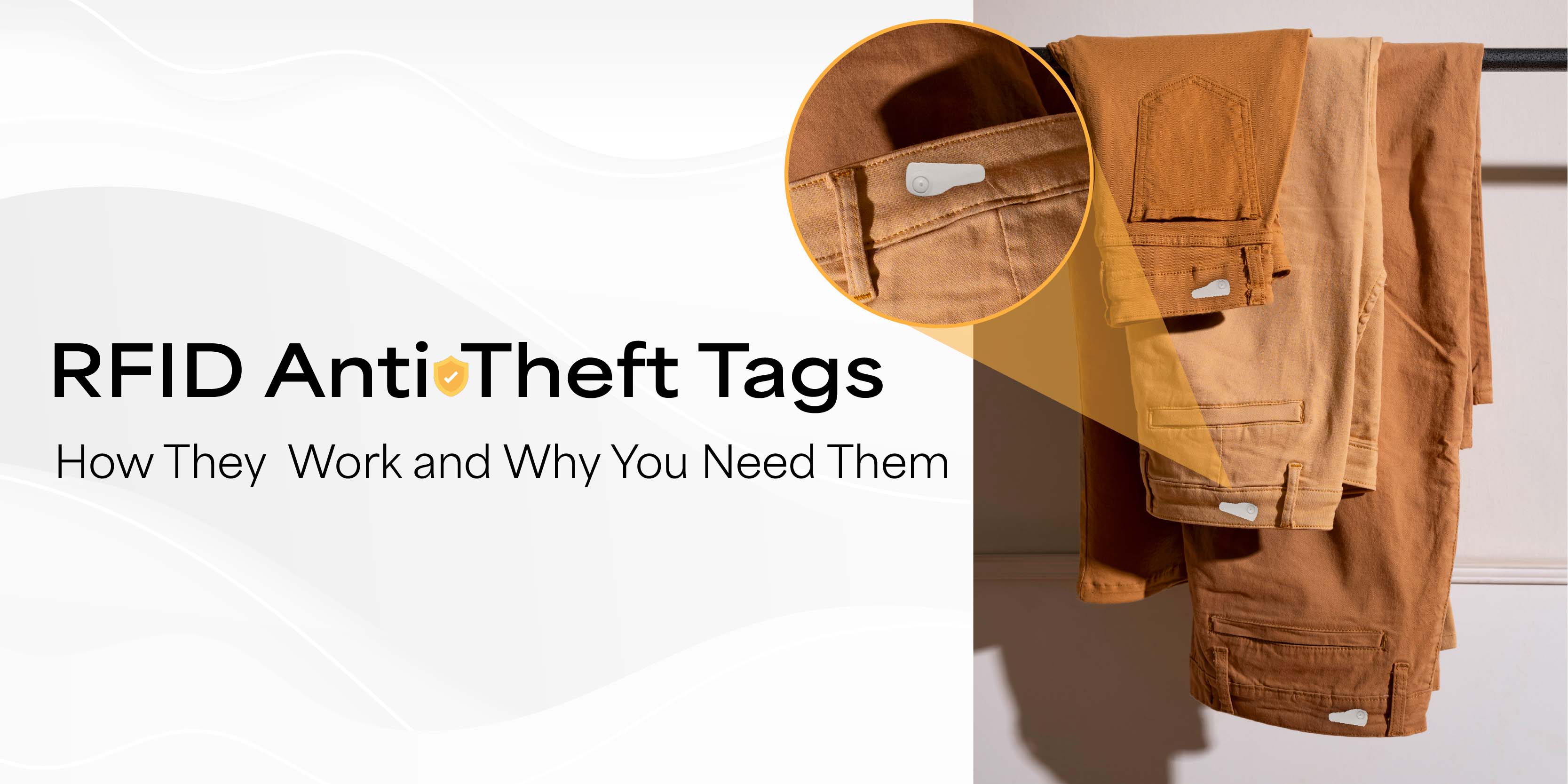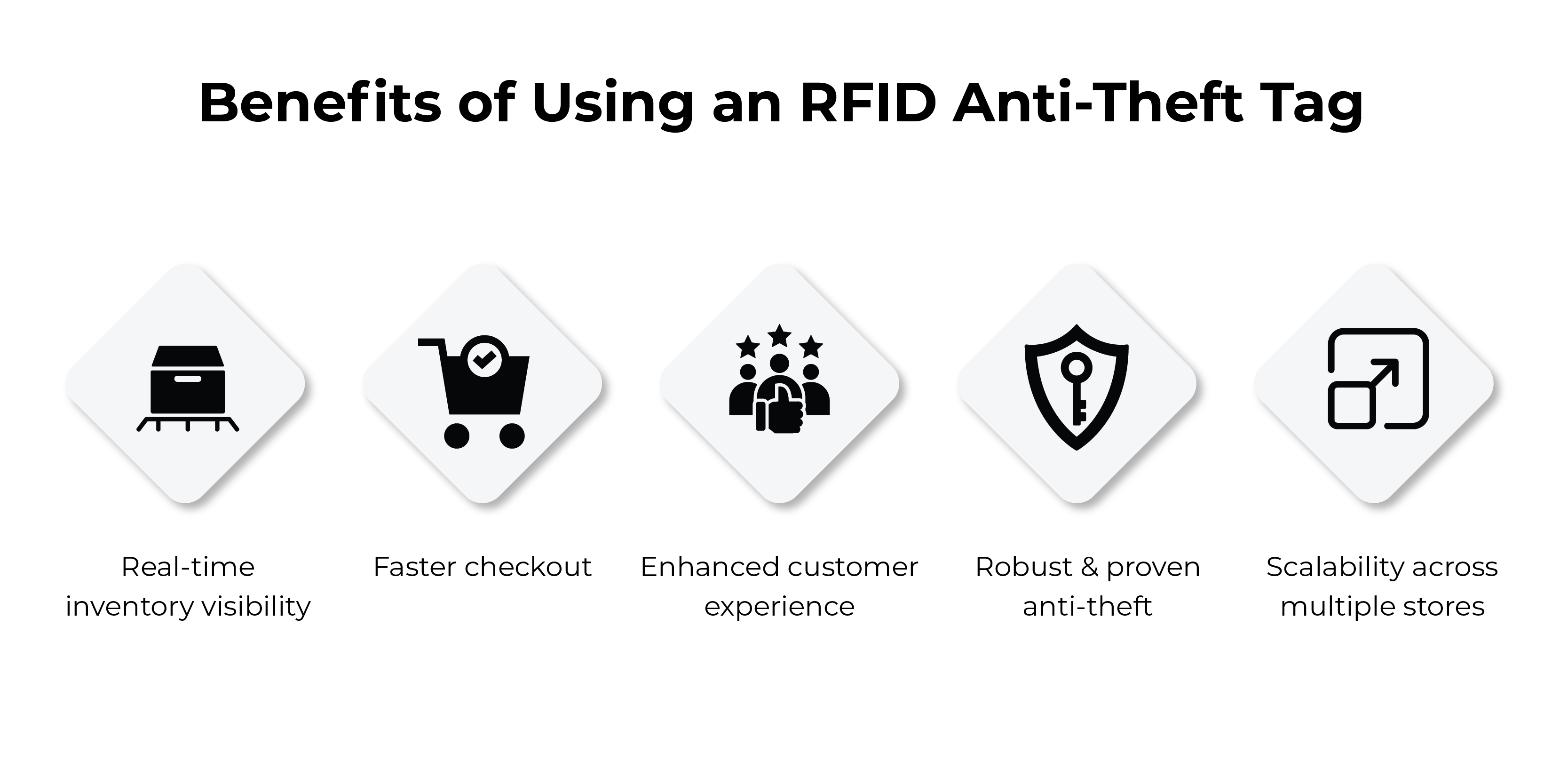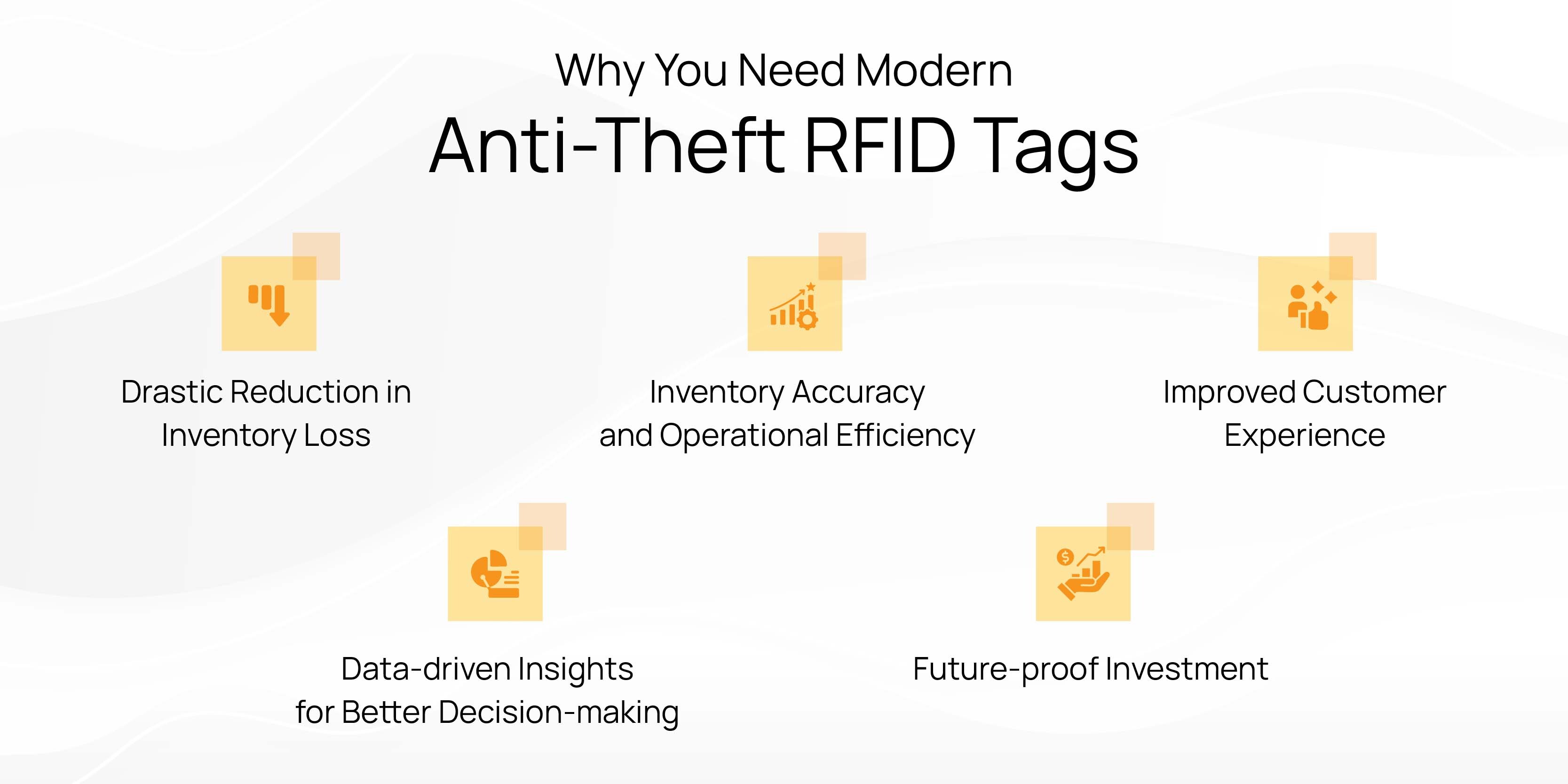RFID Anti-Theft Tags—How They Work and Why You Need Them
In today’s fast-paced retail environment, protecting merchandise while maintaining efficiency is a constant challenge. RFID anti-theft tags provide a modern solution by combining radio-frequency identification with electronic article surveillance (EAS) systems.

Traditionally, RFID systems manage inventory, tracking items from warehouse to shelf, while EAS systems, typically installed at store exits, only detect unauthorized removal. The combined tag allows for item-level visibility throughout the supply chain (RFID function). It triggers an alarm if an item is moved past the exit gates without deactivation/checkout (EAS function). This dual function helps retailers reduce shrinkage, streamline inventory management, and deliver a better shopping experience. Understanding how these tags work—and why they are essential—reveals their critical role in modern retail security and operations
What Are RFID Anti-Theft Tags?
At their core, RFID tags consist of three main components: a microchip, an antenna, and a protective casing. Together, they store and transmit data wirelessly.
Most retail environments use passive RFID tags, which don’t require a battery. Instead, they draw energy from RFID readers.
Integrating EAS tag in the same protective housing provides the data-rich capabilities of UHF RFID with the highly reliable, high-security loss prevention of EAS, without interference.
An EAS part of RFID Anti-theft Tag communicates with detection gates, triggering alarms if items leave the store without proper deactivation.
How Do Anti-Theft RFID Tags Work?
Here’s a simple breakdown:
- Activation: Anti-Theft RFID Tags are securely attached to merchandise before display, ensuring every item is protected from the start. This step integrates products into the store’s EAS security system.
- Detection: EAS readers installed at store exits continuously scan for RFID tags. If an item bypasses checkout without deactivation, the system instantly identifies it and triggers alerts. These tags come with integrated EAS features, and advanced models often use UHF RFID technology for extended read ranges and enhanced detection accuracy.
- Deactivation: At checkout, RFID security tags are either removed or electronically disabled. This seamless process ensures customers leave with purchased items only, reducing false alarms and enhancing shopping convenience.
This seamless process integrates with EAS Security Tag systems, ensuring stolen items trigger alerts. For example, EAS Readers at exit gates in retail stores can instantly detect unpaid items, dramatically reducing theft.
Types of RFID Security Tags and Their Use Cases
Not all tags are created equal. Retailers choose based on product type and environment:
- Hard tags: Durable, reusable, and ideal for apparel and electronics.
- Labels (soft tags): Lightweight, disposable, and perfect for cosmetics or packaged goods.
- Specialized tags: Designed for challenging surfaces like metals or liquids.
Choosing the best anti-theft RFID tag depends on your product mix and store setup. Many retailers rely on EAS RFID Tag solutions for versatility across categories.
Benefits of Using an RFID Anti-Theft Tag
The advantages go beyond security:

Real-time inventory visibility
With RFID security tags, retailers gain instant insight into stock levels, ensuring shelves are replenished quickly and reducing losses caused by unnoticed theft or misplaced items.
Faster checkout
Quick deactivation of anti-theft RFID tags at the counter speeds up transactions, reduces queues, and minimizes customer frustration, creating a smoother shopping experience for both staff and shoppers.
Enhanced customer experience
By reducing interruptions and ensuring products remain available, RFID systems improve customer satisfaction, encouraging repeat visits and building trust in the store’s reliability and efficiency.
Robust & proven anti-theft
RFID anti-theft tags provide a reliable layer of protection by instantly detecting unauthorized product movement. Integrated with electronic article surveillance (EAS) systems, they trigger alerts when items pass through exit points without proper deactivation. This proven technology significantly reduces shoplifting incidents, safeguards high-value merchandise, and gives retailers confidence that their assets are secure.
Scalability across multiple stores
Once implemented, RFID security tags can be rolled out across different branches, ensuring consistent theft prevention, streamlined operations, and unified inventory management across the retail chain.
By combining RFID security tags with anti-theft RFID tags, retailers gain both protection and efficiency.
Why You Need Modern Anti-Theft RFID Tags

Drastic Reduction in Inventory Loss
Retailers using anti-theft RFID tags consistently report significant drops in shrinkage. Visible tags act as a strong deterrent, discouraging shoplifters from targeting protected items and ensuring merchandise remains available for genuine customers.
Inventory Accuracy and Operational Efficiency
Beyond theft prevention, RFID security tags enable automated stock counts, reducing the need for manual audits. This improves supply chain management, ensures accurate inventory records, and helps retailers maintain optimal stock levels across multiple locations.
Improved Customer Experience
With fewer out-of-stock items caused by theft and faster checkout through efficient tag deactivation, customers enjoy a smoother shopping journey. This builds trust, enhances satisfaction, and encourages repeat visits to the store.
Data-driven Insights for Better Decision-Making
Modern RFID systems don’t just prevent theft; they also generate valuable analytics on product movement. These insights help retailers optimize store layouts, plan promotions effectively, and make smarter business decisions based on real-time data.
Future-Proof Investment
Choosing the best anti-theft RFID tag ensures compatibility with evolving EAS Security Tag systems. This protects your business against current challenges while preparing for future advancements, making RFID a long-term, scalable solution for retail security.
Choosing the Best Anti-Theft RFID Tag for Your Business
When selecting tags, consider:
- Tag type (hard vs label): Hard tags suit reusable, high-value items, while labels are lightweight and disposable, ideal for everyday retail products.
- Read range and durability: Select RFID tags with reliable read ranges and strong durability to ensure consistent performance across varied retail environments.
- Cost and compatibility with existing EAS Security Tag systems
- Vendor reliability and pilot testing: Choose trusted vendors and conduct pilot testing to validate tag performance, ensuring long-term reliability and effective theft prevention.
Finding the best anti-theft RFID tag ensures maximum ROI and seamless integration.
Common Myths and Misconceptions
Many misconceptions surround RFID technology. Some believe RFID tags invade privacy, but retail tags only track items, not individuals. Others assume RFID is too costly for small businesses, yet prices have dropped significantly, making solutions accessible. Finally, not all tags are identical—different RFID security tags serve unique purposes, tailored to product type and retail environment.
Conclusion
RFID Anti-Theft RFID Tags are more than just theft-prevention tools—they’re investments in efficiency, customer satisfaction, and long-term profitability. With options like the best anti-theft RFID tag and EAS RFID Tag systems, retailers can tailor solutions to their needs.
If you’re serious about reducing shrinkage and improving operations, now is the time to explore RFID solutions. Partner with trusted providers, run pilot tests, and take the first step toward smarter retail security.
Recent Posts
-
How RFID Anti-Theft Tags Revolutionize the Retail Industry
Introduction Retail theft and inventory shrinkage are challenges that every store owner faces. Wheth …Dec 22nd 2025 -
RFID Portals in Manufacturing: Tracking Work-in-Progress Efficiently
Introduction Manufacturing thrives on precision and timing. Every part, component, and subassembly m …Dec 15th 2025 -
RF Shielding Explained: Types, Applications, and Benefits
Introduction RF shielding is essential for protecting devices from electromagnetic interference. Thi …Dec 8th 2025





